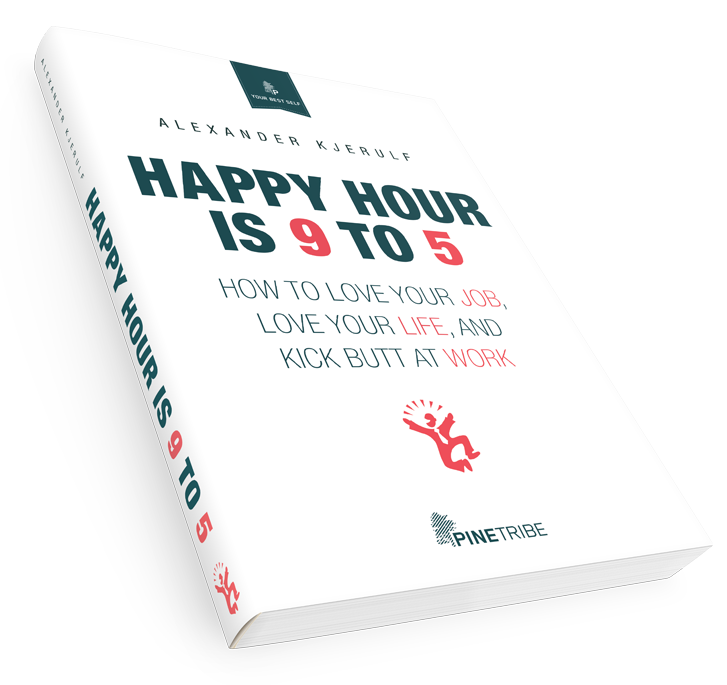Do not spoil what you have by desiring what you have not; but remember that what you now have was once among the things only hoped for.
– Epicurus
-
Quote
-
Openness at Amazon
Technology Review shows how Amazon use transparancy and openness by giving away most of their product data:
The strategy behind Amazon Web Services is to give programmers virtually unlimited access to the very foundation of Amazon’s business its product database. whether they are inside or outside the company’s walls. Developers can grab product data, reformat it, add related services, and use it to attract eyeballs to their own sites. If they feel like it, they’re even free, like Taylor, to create parallel-universe Amazons that have the added features they crave. Amazon demands only one thing in return: that visitors to these satellite sites complete any purchases through Amazon.com itself. The site owners, meanwhile, earn a decent commission on each sale.
Exposing the world’s largest product database – along with the editorial content and personalization functions that make Amazon.com so uncannily useful – is such a counterintuitive business strategy that analogies are hard to come by.
Amazon:
* Has very little control over what people choose to do with their data
* May ultimately loose web traffic to other sites using that data
* Also allow competitors access to the same dataAnd they see a critical business advantage in this “naked” approach. Yay!
-
Doing business in the nude
If you have to be naked, you’d better be buff.
This quote is from The Naked Corporation by Don Tapscott and David Ticoll, one of the books I’m currently reading. They argue (and quite convincingly so) that businesses are entering an age of transparency, ie. that some of the major forces affecting markets and societies increasingly favor those organizations who are open and honest. That in an age where the cost of communication is constantly dropping, the world most likely WILL know what goes on inside your organization – whether you want it or not.
Here’s my take on this: Yaaaaaaay!!! Openness and transparency are good, and it’s hard to be happy and enjoy your job in a company that requires you to keep too many secrets. I think our natural state is to be open and share information, and we can relax more when we’re allowed to do that.
For an additional reason why transparency works, read Non zero by Robert Wright. This book argues that those who cooperate will always triumph over those who battle each other, not in every case but in the long run. And those who can be open and transparent can cooperate way more effectively than those who keep everything secret.
-
Ethical balance sheet
Bank manager Hans Erik Brønserud explains the reasoning behind the ethical balance sheet his bank does in addition to the normal balance sheet:
First and foremost this has given us a tool, which gives us a unique opportunity to sense how our stakeholders view us and what we do. Every year we get specific feedback on whether we are in agreement with our customers, employees and community, and the tables and graphs instantly show us if we’re slacking in any area.
But all of this knowledge makes no difference if we in management don’t take in the signals and correct the things that aren’t working optimally, and this we’ve chosen to do since the very first ethical balance sheet.
BTW, I’m thrilled by their mission statement:
1) We must treat our customers in a way that keeps them coming back and makes them mention on favourably to people who aren’t yet customers with us.
2) We must treat our employees in a way that makes them look forward to coming to work every day and be proud to mention where they work.
3) We must make enough money to keep fulfilling the first 2
-
Learn from the penguin
This paper describes what businesses can learn from the open source movement. An appetizer:
In this paper I explain that while free software is highly visible, it is in fact only one example of a much broader social-economic phenomenon. I suggest that we are seeing is the broad and deep emergence of a new, third mode of production in the digitally networked environment. I call this mode “commons-based peer-production,” to distinguish it from the property- and contract-based models of firms and markets. Its central characteristic is that groups of individuals successfully collaborate on large-scale projects following a diverse cluster of motivational drives and social signals, rather than either market prices or managerial commands.
The article concludes that “this mode has systematic advantages over markets and managerial hierarchies when the object of production is information or culture” which is precisely my business. The Happy at Work Project is organized around 4 principles one of which is open source, and this is a wonderful validation of something I’ve instinctively believed in for a long time.
-
The economics of crack-related violence
Violence related to the sale of crack cocaine in the US is way down. Steven Levitt, the author of the excellent book Freakonomics, looks at why, in an article in the NY times:
…as of 2000 — the most recent year for which the index data are available — Americans were still smoking about 70 percent as much crack as they smoked when consumption was at its peak.
If so much crack is still being sold and bought, why aren’t we hearing about it? Because crack-associated violence has largely disappeared. And it was the violence that made crack most relevant to the middle class. What made the violence go away? Simple economics. Urban street gangs were the main distributors of crack cocaine. In the beginning, demand for their product was phenomenal, and so were the potential profits. Most crack killings, it turns out, were not a result of some crackhead sticking up a grandmother for drug money but rather one crack dealer shooting another — and perhaps a few bystanders — in order to gain turf.
But the market changed fast. The destructive effects of the drug became apparent; young people saw the damage that crack inflicted on older users and began to stay away from it. (One recent survey showed that crack use is now three times as common among people in their late 30’s as it is among those in their late teens and early 20’s.) As demand fell, price wars broke out, driving down profits. And as the amount of money at stake grew smaller and smaller, the violence also dissipated. Young gang members are still selling crack on street corners, but when a corner becomes less valuable, there is less incentive to kill, or be killed, for it.
So one of the most pressing problems for big cities in the US went away more or less on its own. Not through increased police presence, tougher laws or anti-drug programs. But through economics. This tells me, that we could use a similar approach to solve similar problems. Rather than fight it (by declaring war on poverty, terrorism, hunger or poverty) but by changing the economics involved. Interesting thought, huh?
-
Happy at work newsletter
The Happy At Work Project has long been publishing a monthly email-newsletter in danish, which has become very popular. Now we’ve decided to start publishing the newsletter in both english and danish, and the very first english edition can be found here.
The newsletter has tips and ideas on how to be happy at work and also book reviews, articles and even some shameless advertising for the work we do :o)
-
World-wide happiness at work
I’m very proud to announce the first international forum on happiness at work, September 7-9 in Copenhagen.
-
Quote
In every substantive sense, employees of a company carry more risks than do the shareholders. Also, their contributions of knowledge, skills and entrepreneurship are typically more important than the contributions of capital by shareholders, a pure commodity that is perhaps in excess supply.
– Sumantra Ghoshal
-
Book review: Happiness: Lessons From a New Science
Money will not make you happy, unless you’re very poor, in which case a little money goes a long way. And yet individuals and societies seem to regard increased spending as the only reliable measure of success, and the main goal of most governments is to achieve an economic growth rate that beats out that of comparable countries. In Happiness: Lessons From a New Science economist Richar Layard argues that this is a totally wrong approach, which will not improve people’s lives. As an example consider indonesia where the average annual income is less than 1/10 of that of the US – but where people are just as happy.
Layard draws much inspiration from the philosopher Jeremy Bentham who had it right as far back as the 1800’s when he said that “The greatest happiness of the greatest number is the foundation of morals and legislation”. The goal of the individual is to be happy, this has been known since Aristotle who said that whatever else we desire, we want it because we expect it to make us happier. Therefore happiness is the underlying “why” of all human activity – including constructing and governing societies.
So what can a society do to make its people happier? Layard mentions the 7 factors that have been shown to have the greatest influence on people’s happiness:
* family relationships
* financial situation
* work
* community and friends
* health
* personal freedom
* personal valuesIt’s interesting to note, that an economic policy that seeks to encourage people to work more, eg. lowering taxes or increasing the mobility of the work force, will in fact decrease people’s situation in several of these areas and thus make people less happy.
One country has in fact acted on this: In Bhutan, a tiny nation in the Himalayas, King Jigme Singye Wangchuck decreed that “Gross national happiness is more important than gross national product [because] happiness takes precedence over economic prosperity in our national development process.” I feel quite sure that more countries will come to make similar decisions. Western materialist culture has made us happy over the last few decades, but constantly increasing consumerism has probably taken us as far as it possibly can happiness-wise. We will not be happier because we can buy more or bigger cars, TV’s and houses. More time and an increased ability to enjoy time with our friends, families and communities is a whole different matter, and this is where society needs to focus.
Layard’s is the most cogent and readable book on happiness on a national and global scale, and seeing as Layard is an economist rather than a psychologist, most of it is based on hard-core numbers and statistics. Layard’s main point is that happiness can be objectively quantified in individuals and in socities and can thus be used as a measure of success. I wish every political leader would read it – I think I’ll send our prime minister a copy :o)






